13 Top Feature Request Software to Build Better Products

By Dayana Mayfield
Last updated on Thu Jul 10 2025
A feature request platform is a smart way to open a direct line of communication between your product team and your users—without having to go through your digital marketing team.
This line of communication can be used for:
Users requesting new features
Users commenting and upvoting on other users' requests
Product managers asking for more feedback and details on a request
Product managers building features based on feedback and sharing that publicly with roadmaps
Product managers announcing new features
Without a feature request tool, that communication gets broken. Customer feedback gets lost. Customers don't feel heard or listened to. Product managers aren't sure what to build next. It can be a huge mess.
In this guide, we dive into the top feature request software and what features to look for when making your choice. We've recently updated the pricing and review scores so you have the latest information in one place.
Important features to look for in feature request software
Make sure the platform you choose offers these features:
A website or web app feedback widget that you can install in your product
Feature upvoting to help you prioritize popular requests
Single sign-on so users don't need separate credentials
Product roadmaps so you can drag feature requests into your public roadmap
A changelog with update announcements offering one place for users to turn for all of the latest news and commentary about your product
Now, onto the list of the best tools to consider.
For each one, we've included a list of top features, the pros and cons of the platform, its pricing, and reviews.
1. Frill
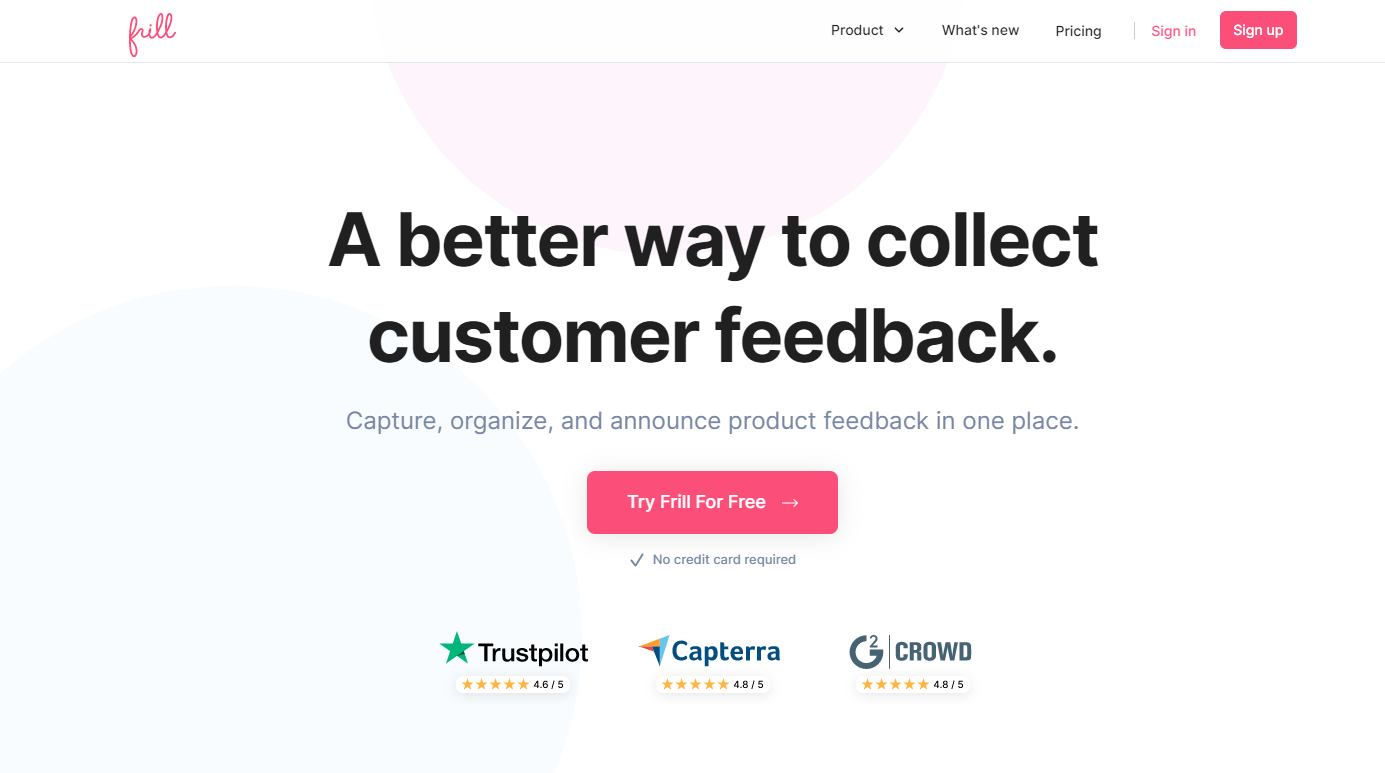
Features
Frill offers a lot of useful features, but they're all centered around these three main features:
Ideas - With Frill, you can collect user feedback with idea boards. Users can submit new ideas, comment on existing ideas, and upvote. The account admin can create tags, and users can select up to 3 tags for all of their posts.
Roadmap - You can make your roadmap public to everyone, or only to signed-in users. Create your own custom statuses for the Kanban-style workflow to show your users your product's progress.
Announcements - Create release notes for every important release or monthly, and add them to your announcements log.
Here is Frill's own idea and roadmap board, where you can see all of these features available in one place. You can whitelabel the software and customize it to match your brand.
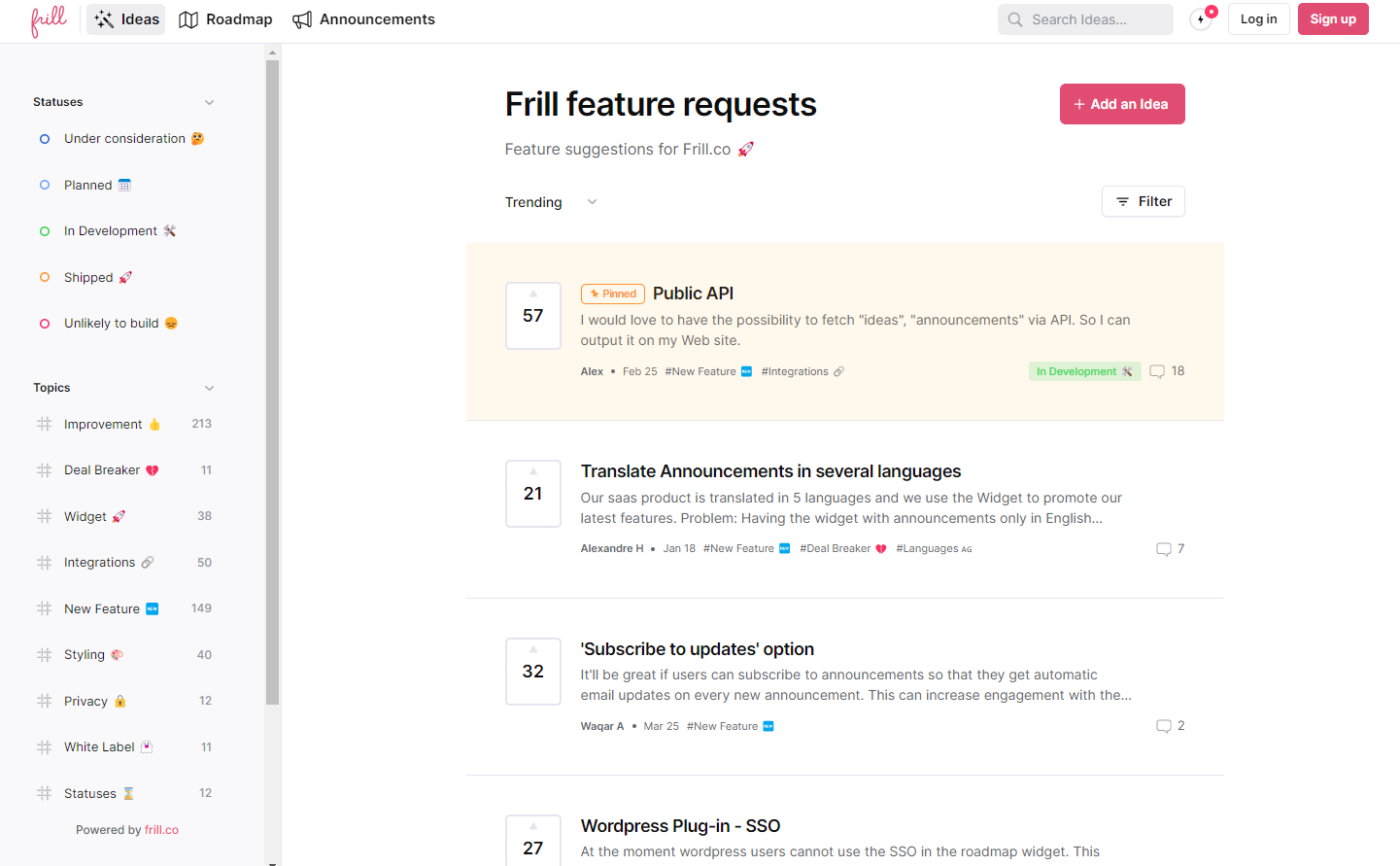
Pros and Cons
Frill advantages and disadvantages are intertwined. It's a simple platform, and doesn't offer customer service software or integrations with those platforms. However, most SaaS companies prefer to keep those things separate and that isn't a problem. If you want a simple place where users can submit feedback and keep up to date with your product, Frill can be an excellent fit.
Pricing
Frill offers simple, transparent pricing with a 14-day free trial and no credit card required. Plans start at $25/month for startups, $49/month for growing teams, and $149/month for advanced features, plus optional add-ons for privacy, surveys, and white labeling. Pay annually and get one month free.
Reviews
4.9 stars on G2
4.7 stars on Capterra
5.0 stars on ProductHunt
2. UseResponse
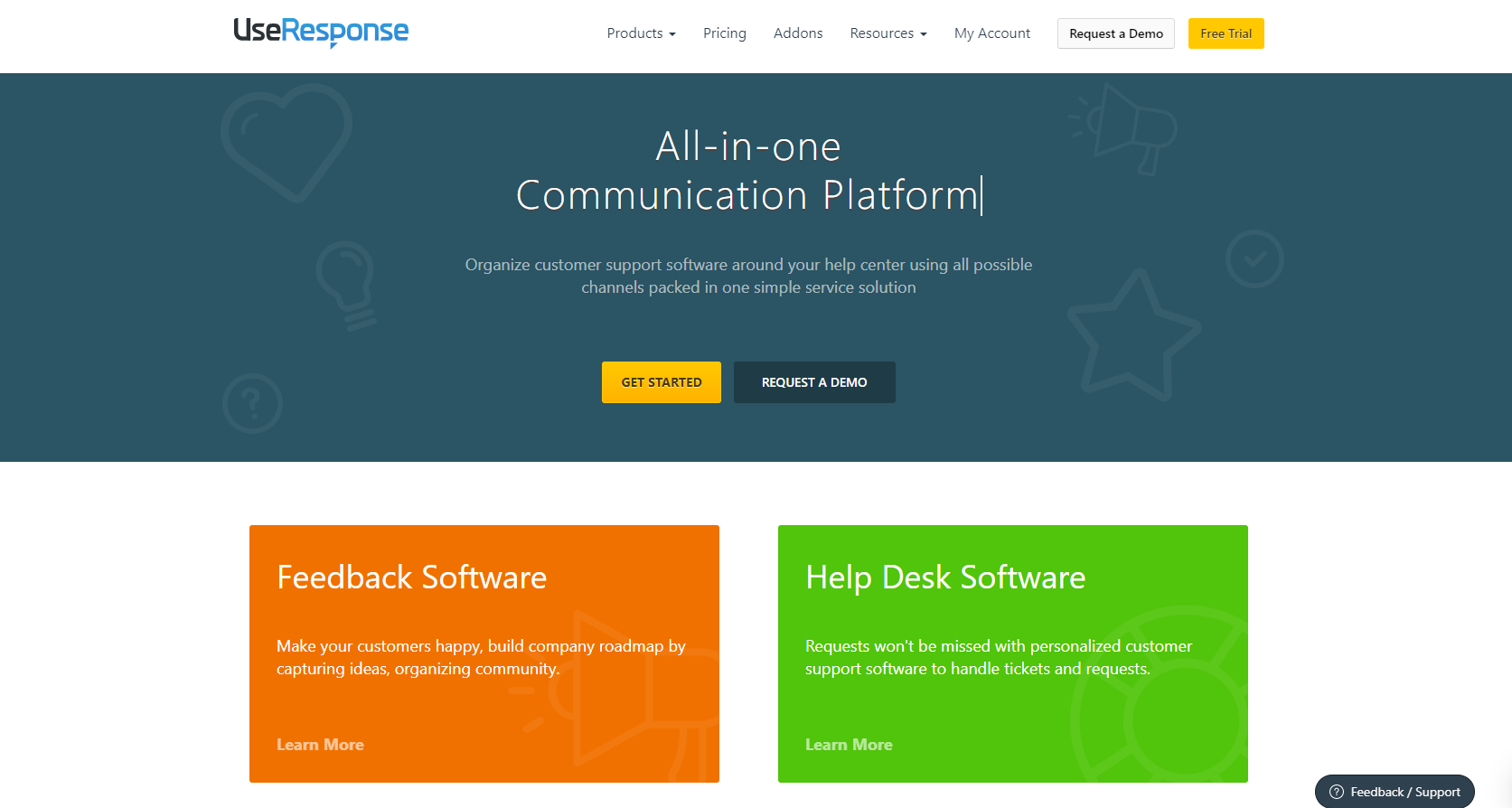
Features
UseResponse offers feedback software, help desk software, knowledge base software, and live chat all in one place.
With the feedback software, you get a user feedback portal with custom statuses and upvoting.
Pros and Cons
UseResponse may be a bit of a jack-of-all-trades, master-of-none sort of product. The UX is a bit outdated. If you don't have any of these tools, you may choose UseResponse, but keep in mind that you might need to migrate to Intercom or something similar if you want to pay for better UX down the road.
Pricing
UserResponse offers a flexible support suite starting at $49 per agent/month for cloud, including feedback, help desk, and knowledge base. For full control, choose the on-premise option from $120 per agent/month with open code and hassle-free updates.
Reviews
3. Upvoty

Features
Upvoty's top features include user feedback boards, product roadmaps, and the changelog. It also offers a widget you can embed in your product.
Pros and Cons
Upvoty supports several different languages, so if you're building multilanguage user experiences, then that will be a major advantage for you. The platform doesn't offer customer support management, but the integrations with support tools can help streamline things.
Pricing
Upvoty pricing starts at $15/month for one project with unlimited boards, users, and team members. The $25/month plan adds integrations, while the $49/month plan includes three projects, all integrations, and custom SSO. All plans include a product roadmap and custom domain.
Reviews
3.1 stars on G2
5.0 stars on Capterra
3.8 stars on ProductHunt
4. AnnounceKit
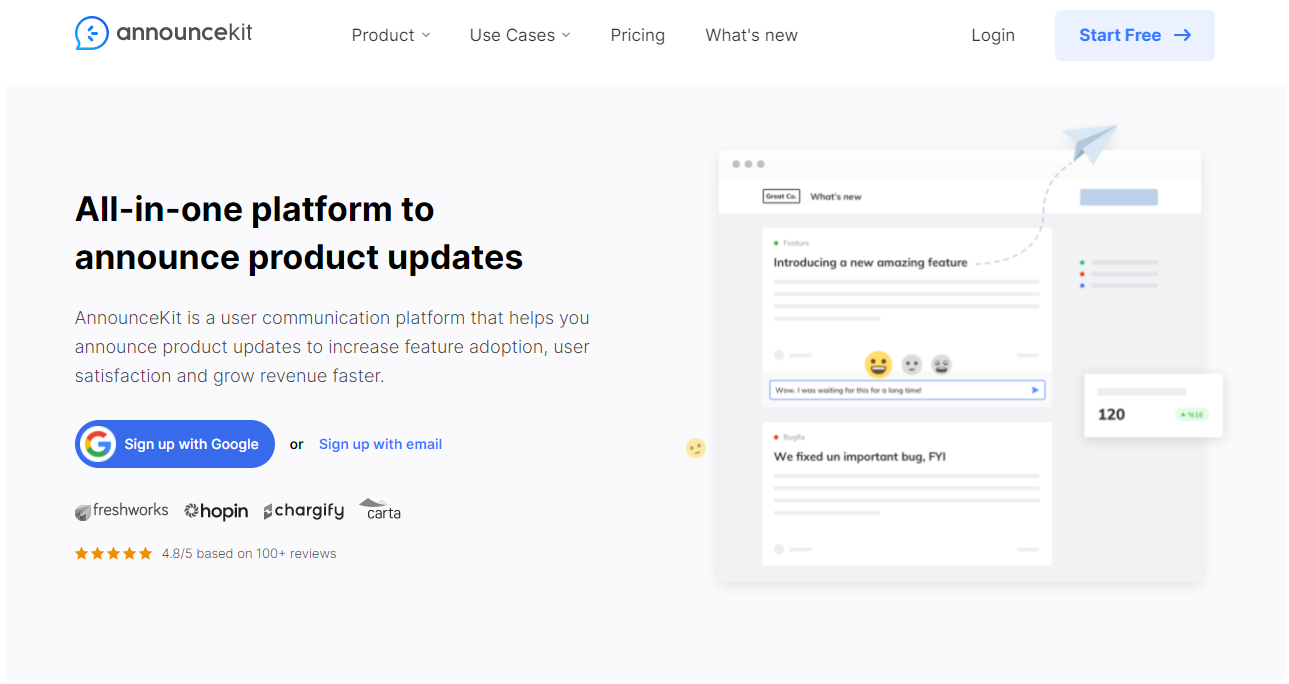
Features
AnnounceKit is a featured designed for product release notes and changelogs. It boasts advanced user segmentation and multichannel distribtution to help product marketers spread news of the right releases to the right users. However, it does offer emoji reactions and comments on feature updates, allowing you to collect feedback.
Pros and Cons
If you already have a dedicated user feedback tool like Frill, and you're looking for a more advanced way to announce releases (with user segmentation), AnnounceKit might be a great fit for you. If you'd rather have feedback and announcements in one place, this tool won't be the right choice as users can only give feedback on updates, instead of submitting their own separate feature requests.
Pricing
AnnounceKit’s pricing starts at $79/month for the Essentials plan with core update tools like widgets, comments, and email notifications. The Growth plan is $129/month, adding segmentation, roadmap, and feature requests. Scale is $339/month with advanced security, integrations, and multi-language support. Enterprise plans start at $599/month, billed annually, with custom agreements and dedicated service.
Reviews
5. FeatureOS
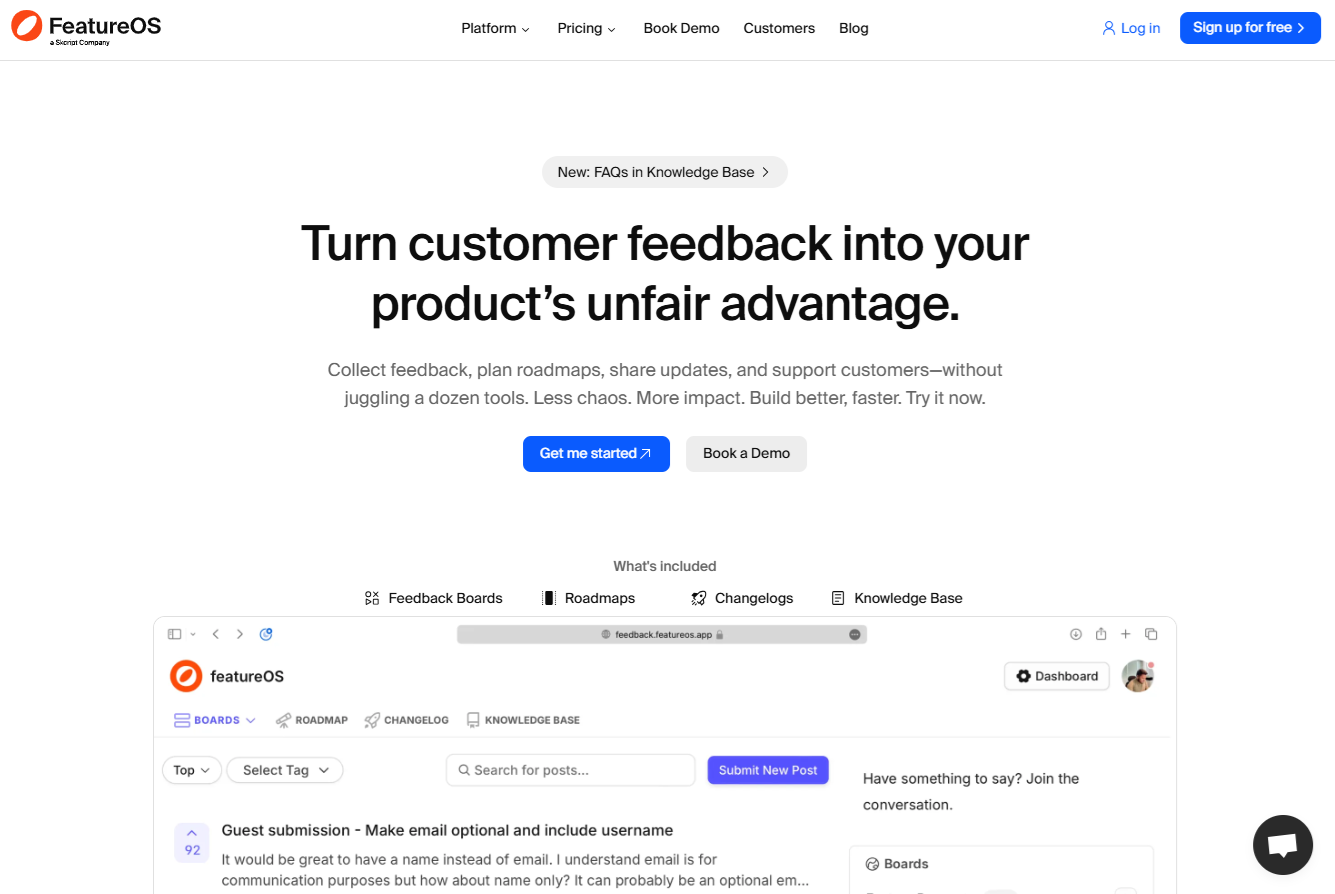
Features
FeatureOS (formerly Hellonext) offers feedback boards, a product roadmap tool, a changelog software, a knowledge base software, and several integrations. The platform is not only used by SaaS companies, but consumer tech brands as well.
Pros and Cons
FeatureOS offers product analytics, making it a fit for companies that want to collect qualitative feedback and quantitative feedback in one place. One major con is that the platform is very complicated and robust, making it too time-consuming for teams looking for a simple way to collect feedback.
Pricing
FeatureOS pricing starts at $60/month for indie developers, including all modules, five boards, and three integrations. The Growth plan is $120/month with ten boards, API access, and whitelabeling. The Business plan is $250/month with unlimited boards, Salesforce integration, dev hours, live chat, and full AI features.
Reviews
5.0 stars on G2 (out of 2 reviews)
6. Feedbackify
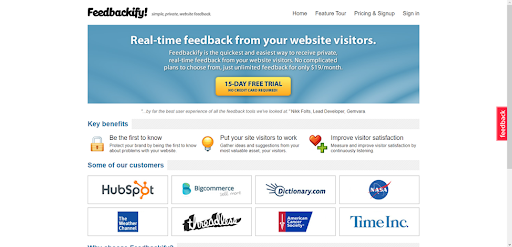
Features
With Feedbackify, you can create a product feedback form, customize the style, and display it on your website. Inside of the dashboard, you can read and sort through the feature requests and other types of feedback.
Pros and Cons
Feedbackify's UX is super outdated, making it a no-go for most modern brands. However, if all you're looking for is an embeddable feedback form, it could be a fit for you, as its simplicity does give it an advantage.
Pricing
Feedbackify has one plan that costs $19 per month.
Reviews
7. ProProfs Qualaroo
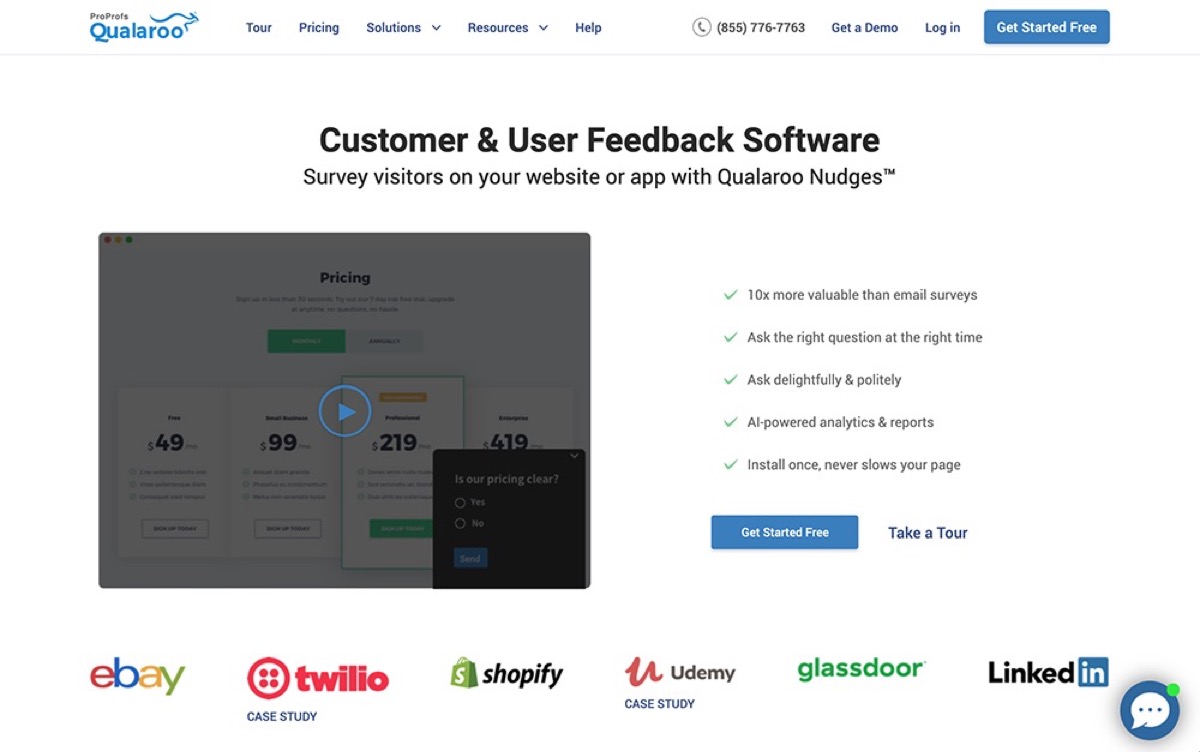
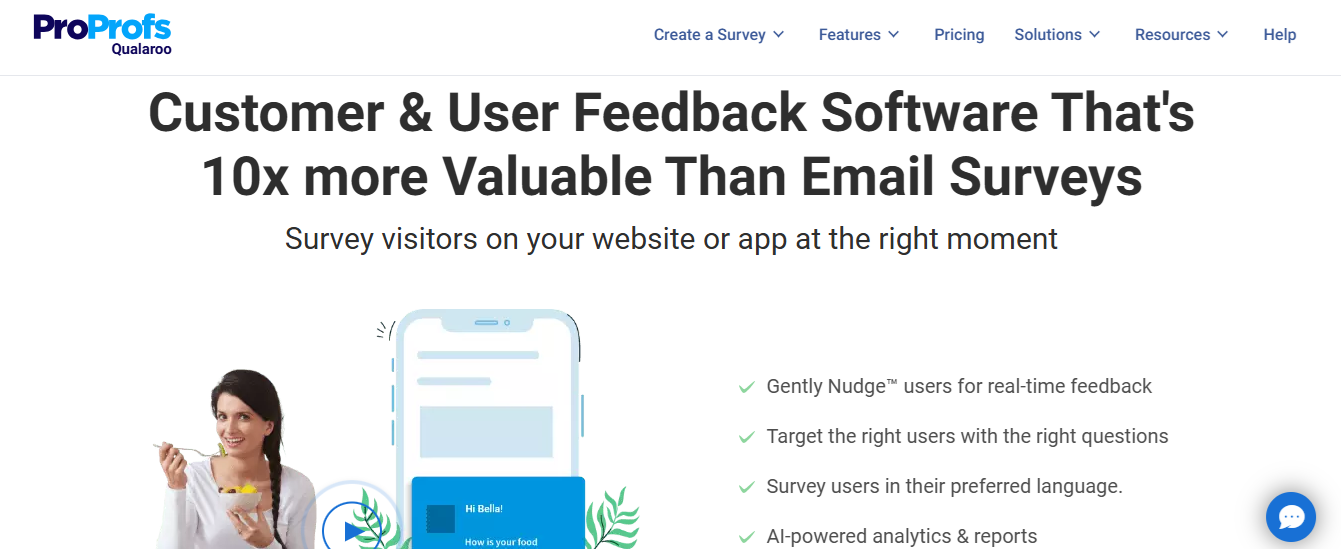
Features
ProProfs Qualaroo offers user segmentation, surveys, website nudges, exit intent surveys, confirmation page surveys, and question branching. It can be used for feature requests, market research, and website feedback.
Pros and Cons
ProProfs Qualaroo does have advanced segmentation for requesting feedback, but it's not designed for SaaS companies. It doesn't offer a product roadmap or changelog tool. It's more of a fit for B2C companies that need to segment their requests.
Pricing
Qualaroo pricing starts with a free plan for up to 50 responses. Essentials is $19.99/month billed annually for email surveys and unlimited responses. Business is $49.99/month billed annually with website Nudges™, NPS, CSAT, and advanced targeting. Enterprise plans start at $149.99/month for large-scale surveys, SSO, APIs, and advanced security.
Reviews
8. Jotform
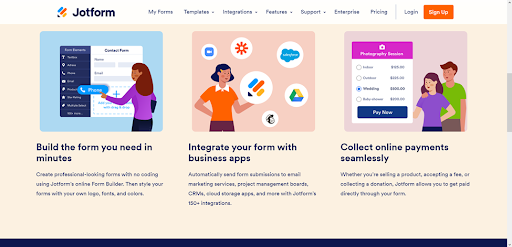
Features
Jotform is a essentially a form and tool. It can work well for feature requests if you don't yet want to host a dedicated idea board, but would rather collect feedback with a form submission tool that can be used for other purposes.
Pros and Cons
It doesn't include product roadmaps or announcements, so you'll need other tools for those functions. This can mean you're doubling up your workload, as you'll need to copy features over instead of just dragging and dropping. However, if you want to pay for Jotform for your demo forms or contact forms, then you can save money by using it for feedback forms as well.
Pricing
Jotform’s free Starter plan includes five forms, 100 submissions monthly, and basic storage with Jotform branding. Paid plans start at $34/month (Bronze) for 25 forms, $39/month (Silver) for 50 forms, and $99/month (Gold) for 100 forms with HIPAA compliance. Enterprise plans offer unlimited usage, multi-user access, SSO, and dedicated support.
Reviews
9. Canny.io

Features
Canny.io offers features for feedback management and product roadmaps. You can collect feature requests, analyze them, prioritize them, add them to your roadmap, and then publish release notes when the updates are complete.
Pros and Cons
Canny has most of the features you'll need to collect feature requests and communicate with users. However, Canny isn't affordable. It jumps straight from free to expensive.
Pricing
Canny pricing starts with a Free plan for up to 25 tracked users and unlimited posts. The Core plan is $19/month billed yearly for 100+ tracked users, custom domains, and translations. Pro is $79/month with advanced privacy and PM integrations. Business plans are custom for 5,000+ tracked users and SSO. Learn more about Frill's Canny alternative.
Reviews
10. Typeform
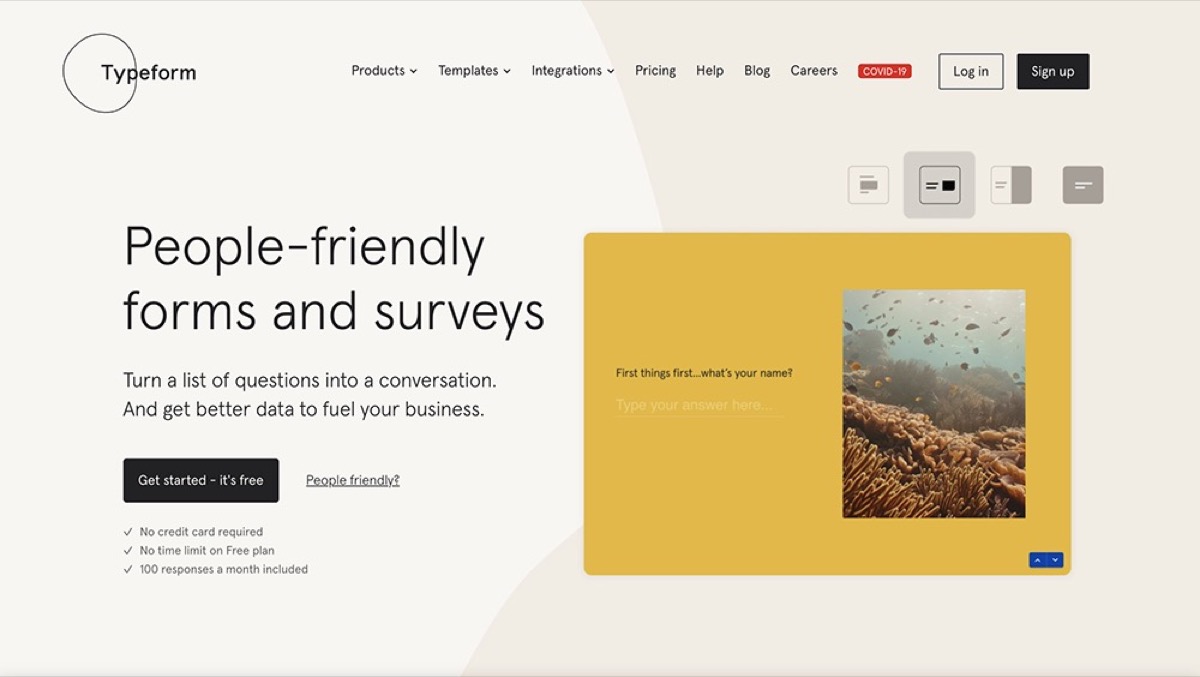
Features
Typeform is a popular survey tool known for it's unique UX. Users can only answer one question at a time. Typeform can be used for any kind of survey or form, including for feature requests. Simply set up a form with questions like, "How can we improve our product?" or "What features would you like us to change or add?"
Pros and Cons
It's not easy to manage incoming responses from Typeform. There's no Kanban-style product roadmap board, meaning you'll have to copy accepted requests over to a separate roadmap tool. However, Typeform is affordable and can be used to consolidate your tech stack.
Pricing
Typeform’s pricing starts at $25/month for the Basic plan with 100 responses and one user. Plus is $50/month for 1,000 responses, three users, and branding removal. Business is $83/month for 10,000 responses, five users, advanced analytics, and priority support. Enterprise plans offer custom limits, SSO, and dedicated support.
Reviews
11. Pendo
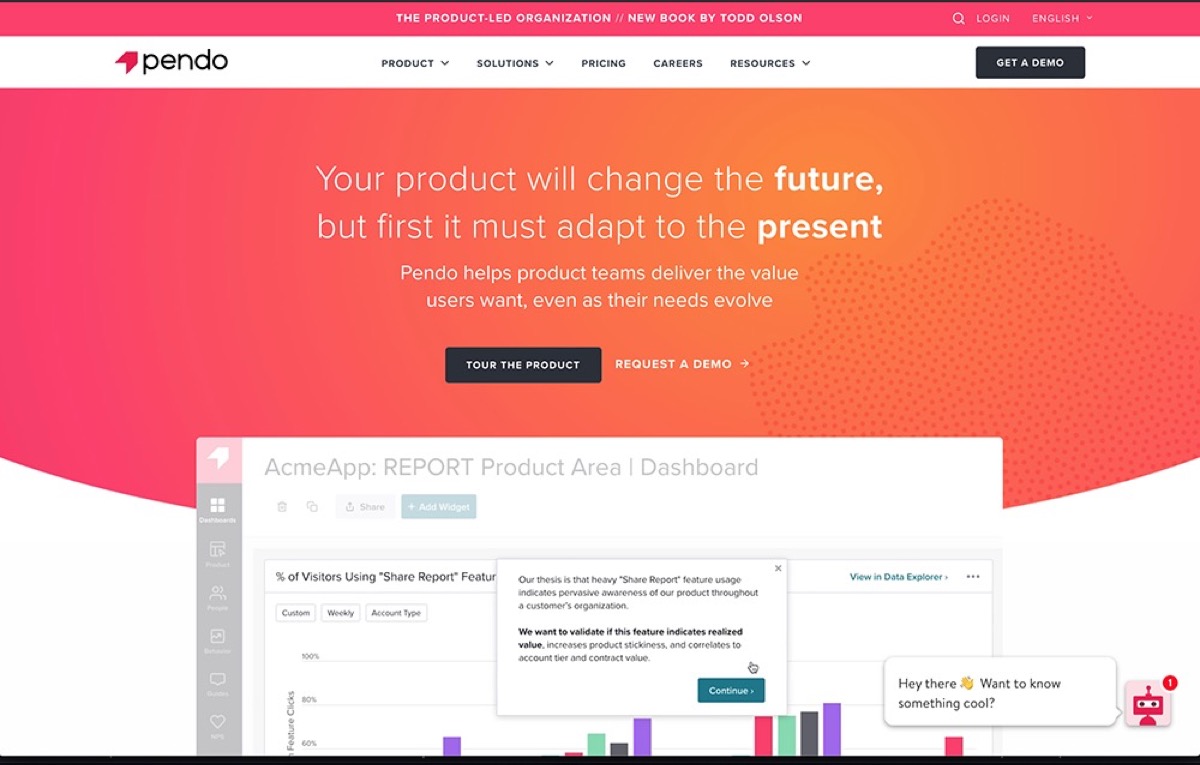
Features
With Pendo, you get a variety of product development tools in one place, including user onboarding, product engagement, in-app support, feedback collection, and revenue growth (PLG flow testing). The feedback collection product is essentially a feedback form that you can display to various users.
Pros and Cons
Pendo is a great platform for PLG teams, but it's not necessarily the best for feedback collection. There's no idea board with user commenting, upvoting, or product roadmap. Pendo is best used for onboarding and freemium experiments. But if you can't afford a designated feedback tool, it can function for a time.
Pricing
Pendo is an enterprise tool, so you'll need to contact them for custom pricing.
Reviews
12. Zonka
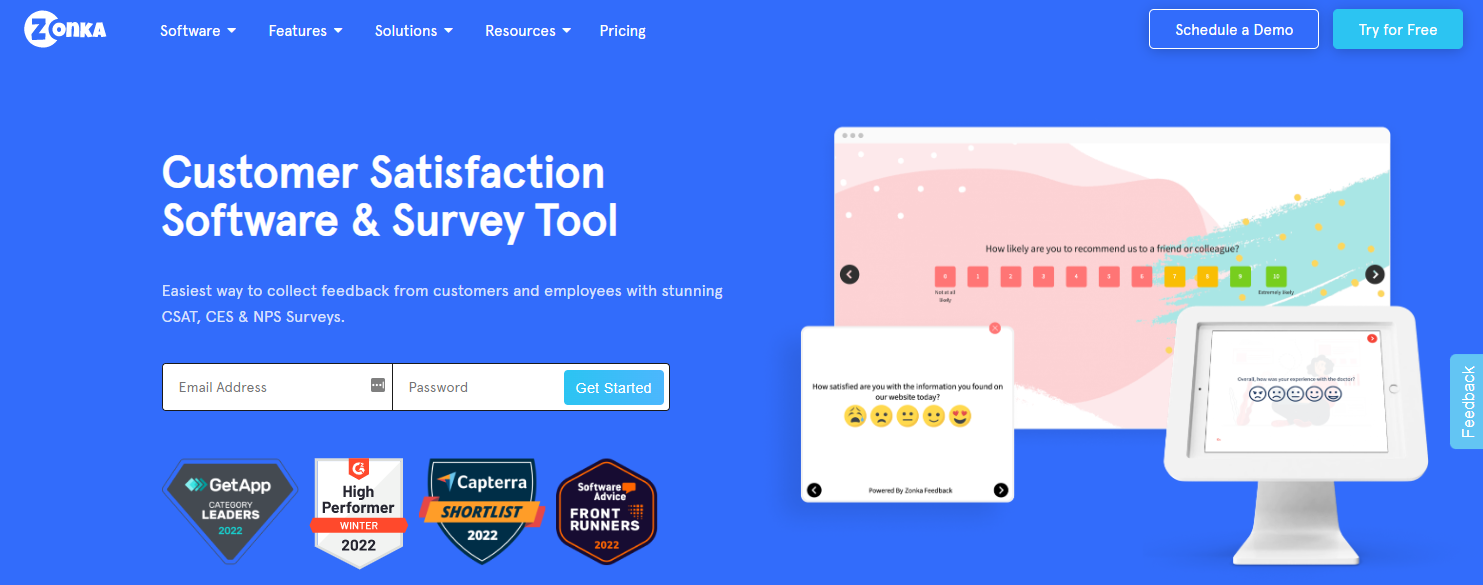
Features
With Zonka, you can create surveys, collect feedback via forms, send alerts and notifications, and collect NPS ratings.
Pros and Cons
The platform can be used by businesses in any industry. This is an advantage for digital-first businesses looking for feedback on their website or customer experience. But it's a disadvantage for SaaS product managers wanting to collect feature requests with upvoting and roadmap functionality.
Pricing
Zonka Feedback offers flexible plans starting with a Free tier for up to 50 responses per month and basic surveys. The Starter plan is $49/month for 250 responses, branding removal, automation, and integrations. Growth is $199/month for 1,000 responses, white labeling, advanced AI, and analytics. Enterprise plans offer custom limits, SSO, and dedicated support.
Reviews
13. Mopinion
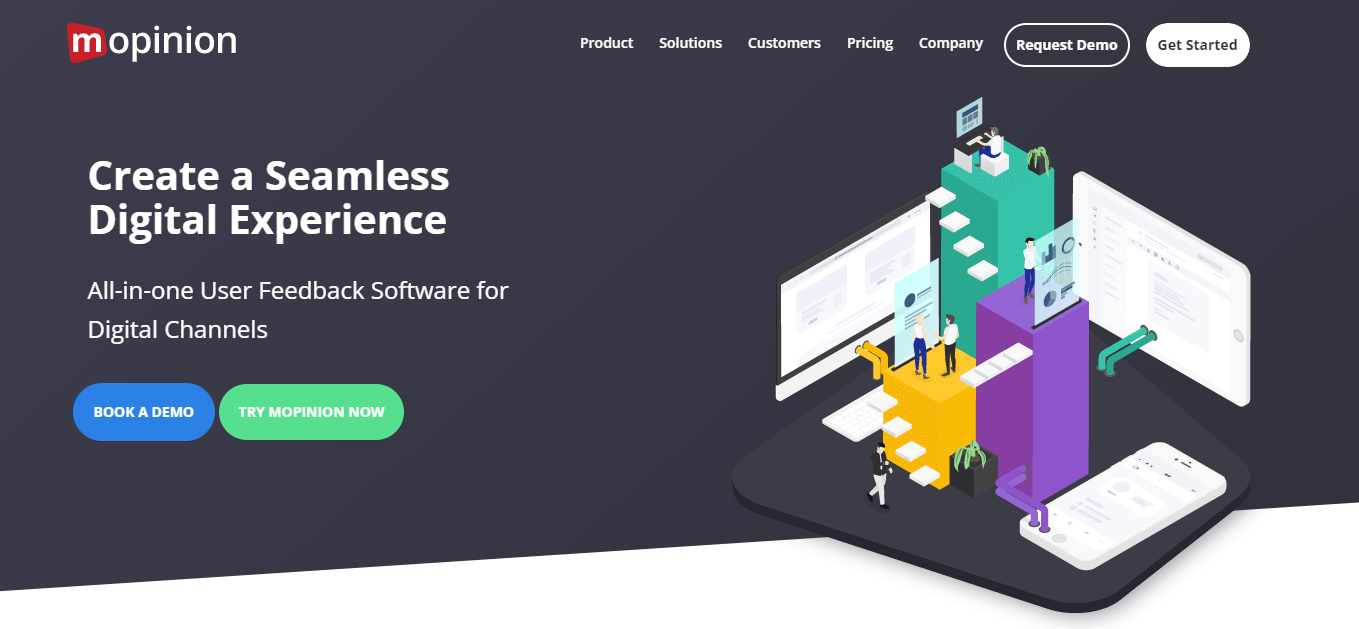
Features
Mopinion makes it easy to collect feedback from your website, mobile application, or email marketing. It can be used by digital marketers, product managers, mobile marketers, and CX professionals. You can use the feedback forms to collect multichoice responses and open text responses.
Pros and Cons
Mopinion is a simple-to-use widget that easily embeds into any website or product. The form can be easily customized to whatever sort of feedback or feature request you want. However, it doesn't have a product roadmap tool, so you'll need something separate for that. Considering its simple use case, it's probably too costly.
Pricing
You'll pay $279 per month for the Standard plan. They also have enterprise plans that are customized to each business.
Reviews
There are tons of feature request software availability. The right one for you depends on your tech stack and budget.
Frequently asked questions
Get answers to important questions.
What is a feature request platform and why do I need one?
A feature request platform is a dedicated space where your users can easily suggest new features, vote on ideas, and share feedback. It keeps all requests organized in one place, so nothing gets lost in emails or chats. This helps your product team see what customers really want, build the right features, and show users they’re being heard.
What should I look for when choosing a feature request tool?
When choosing a feature request tool, look for essentials like an easy-to-use feedback widget, idea upvoting, single sign-on (SSO) for seamless access, and a clear product roadmap. A built-in changelog or announcements board is a big plus for sharing updates. Make sure it’s simple to moderate ideas, gather comments, and organize requests by tags or topics. Finally, check for integrations with your existing support or dev tools.
How does feature upvoting work?
Feature upvoting lets your users vote on ideas they care about most, so the best suggestions rise to the top. Instead of sorting through random feedback, your product team instantly sees which requests matter to the majority. Users can also comment and add context, making each idea clearer. Upvoting is an easy, transparent way to prioritize your roadmap based on real customer needs, not guesses.
What’s the difference between a feedback tool and a feature request tool?
A feedback tool and a feature request tool are often the same, but there’s a subtle difference. A feature request tool is built specifically for software companies to collect, manage, and prioritize new feature ideas. A general feedback tool can be used by any business for surveys, reviews, or suggestions.
How do I communicate updates after collecting requests?
After collecting feature requests, keep users in the loop with clear updates. Use a public product roadmap to show what’s planned, in progress, or shipped. Pair it with a changelog or announcement log to share release notes and improvements. This transparency builds trust, shows customers their input matters, and keeps everyone aligned on what’s new and what’s coming next.
Sign up for Frill's affordable plans and use our features for Ideas, Roadmaps, and Announcements.